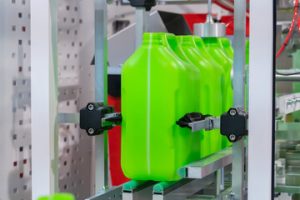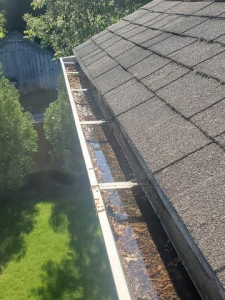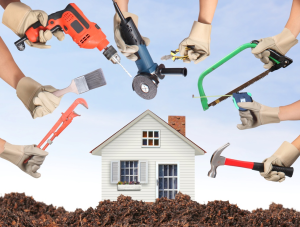Handymen have a general knowledge of many different trades and can take on a variety of projects at a low to medium cost and difficulty level. Specialized contractors have more intensive licensing requirements and can work on larger construction projects. Contact Emerald City Handyman of Naperville now!
Make sure your toolkit includes a mini LED flashlight and a stud finder, which are useful for working in dark or tight spaces. Also consider investing in an angle grinder for cutting, grinding, and polishing a variety of materials.

The plumbing services that handymen can offer typically include clogged toilets and drains, fixing leaky faucets, and installing new sink fixtures or garbage disposals. They can also address a range of other issues related to water use, including detecting and repairing minor pipe leaks, optimizing shower heads for water efficiency, and ensuring that water flow is steady throughout the home.
Because handymen often have a wide variety of skills, they are ideal for smaller tasks like unclogging a toilet or repairing a broken window screen. They can be a cost-effective solution for small jobs that don’t require the expertise of a professional plumber or electrician.
However, if your home improvement project requires a more specialized skill set, it may be better to hire a licensed and insured professional in that field. This ensures that they meet local regulations and will be held accountable for any work-related accidents or injuries. A licensed handyman will usually have insurance that covers property damage and liability for negligence or accidents, whereas a general contractor may need additional coverage through a subcontractor’s policy.
A general contractor works on larger, more complex projects that are often time-consuming and expensive. They are experienced in a variety of construction techniques, such as drywall installation, painting touchups, and carpentry repair. They can also complete electrical and plumbing work, though they generally need a license to do so in most states.
While you may be tempted to hire the lowest-priced handyman you can find, it is important to consider their level of experience and training. Checking references is a good way to ensure that they can provide the quality of work you need. In addition, make sure you understand their payment and cancellation policies and that everything is documented in a written contract.
Having the right tools for the job is essential to ensure the quality of your handyman’s work. The most common ones are a ladder, tool belt, and a variety of specialized tools. In addition to these, you should always check a handyman’s property damage liability insurance before hiring them. Thimble offers on-demand insurance for handymen, with flexible policies that can be purchased by the hour, day or month. You can even download a copy of their Certificate of Insurance in less than 10 minutes.
Electrical
A handyman can do a variety of electrical jobs, including rewiring outlets and switches, running wires to rooms for televisions and other devices, installing ceiling fans and more. They can also help you choose and install lighting fixtures for your home that will create a relaxing or mood-enhancing atmosphere. They can even help you improve energy efficiency and save on your utility bills by advising you on ways to reduce energy consumption.
It’s important that your handyman has the proper credentials and training to perform electrical work on your home. Without this, corners can be cut that could lead to dangerous situations like electrical fires. Additionally, if you ever decide to sell your home, it’s crucial that any electrical work performed by your handyman is up to code. Otherwise, a home inspector may flag the issues and you’ll be forced to pay for repairs or make other financial concessions.
A good handyman can install a wide range of electrical fixtures, including ceiling fans, recessed lights, under cabinet lighting, dimmable lights and more. They can also help you choose the best lighting for your home and install it safely. They can even install appliances like garbage disposals and washer/dryer hookups, as well as electrical outlets for outdoor equipment. They can also help you wire for smart home devices, such as security systems, remote-controlled climate control and voice-activated lighting.
If you’re looking for an experienced and reliable handyman to help with your electrical projects, contact Mr. Handyman today! We offer fair pricing and next-level expertise.
Outdated or overtaxed wiring and circuitry can damage your appliances, HVAC system, televisions and computers. We can repair or replace your wires and circuitry to protect you from expensive damage. We can also help you set up surge protection to protect your devices and appliances from damaging power spikes during storms or outages. Our electricians are trained in the latest home automation technologies and can help you save money on your energy bills by upgrading your home’s outlets, adding more indoor and outdoor GFI outlets and enabling your appliances to work on solar or battery power.
Painting
Painting is a crucial handyman service that can breathe new life into any room. These professionals specialize in everything from prep work (like power washing) to applying the final coats of paint. Their expertise ensures your walls look brand-new, while their knowledge of high-durability coatings helps protect your investment.
They can also help you choose from hundreds of color options, making it easy to create the ideal atmosphere for your home. Handymen are also skilled at patching and repairing any imperfections in your walls or ceilings, leaving you with a flawless surface ready for paint or wall coverings.
Many homeowners underestimate the amount of prep work involved in a painting project, which can significantly impact the cost. To get an accurate estimate for your unique needs, it’s a good idea to obtain quotes from multiple handymen. This will allow you to compare the scope of work, materials required, and labor costs for each option.
While it may seem obvious, the type of paint you’re using will have a significant impact on your budget. The price of a gallon of paint can range anywhere from $20 to $50, so make sure you ask your handyman about this before beginning the project. In addition to the paint itself, handymen may charge for other necessities like tape, a drop cloth, a ladder, a brush, and various types of rollers.
Drywall maintenance and repair is another common request that handymen receive. These services can include patching holes and dents, as well as repainting or replacing existing wallpaper. Handymen can also perform more complex jobs, such as re-tiling an entire bathroom or kitchen.
Handymen are also proficient at cleaning and repairing gutters, helping prevent water damage that can be caused by blocked or damaged downspouts. This proactive approach to gutter maintenance saves you time and money in the long run, while protecting your property from costly water damage.
Handymen often provide a wide array of additional residential and commercial services, such as assembling furniture, installing shelving or artwork on walls, and even repairing appliances. If you have an item on your honey-do list that falls outside of these abilities, consider hiring a specialist like a plumber, electrician or Gas Safe engineer.
Flooring
A handyman is the home improvement superhero, capable of tackling a broad range of repair and renovation tasks. They serve as your one-stop shop, eliminating the need to call in different specialists for each nagging item on your home to-do list. While hiring a professional, it is important to discuss project expectations and ensure that they are aligned with your goals. Also, be sure to ask about any warranties or guarantees they may offer for their work.
Carpentry
Handymen are skilled at a wide variety of woodworking projects. For example, if your favorite rocking chair has a persistently squeaky leg, a handyman can tighten it in no time. Additionally, they are proficient at installing crown molding and building custom bookshelves. Handymen can even help with more significant projects, such as adding an addition to a house or tearing out and replacing an entire shower floor.
Flooring Repair and Installation
Tiled surfaces are a common request for handyman services. Not only do they install new tiles, but they can also take care of grout refreshments, giving your floors a renewed shine that looks pristine and fresh. Likewise, they can also replace existing floors, whether it is vinyl or hardwood.
Regardless of the task, it’s best to hire a handyman who is licensed and insured. This way, you can be assured that they will perform their work to your satisfaction and that you are protected in the event of any accidents or damages during the process. In addition to licensure, a handyman should also have general liability insurance. You can purchase a policy online and get access to your certificate of insurance in about 10 minutes.





